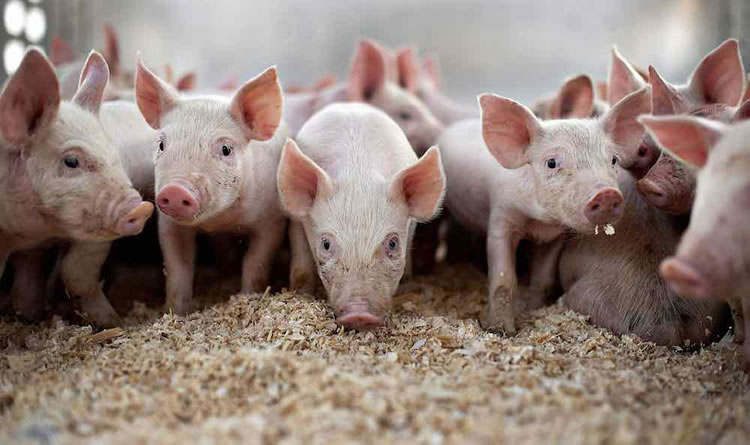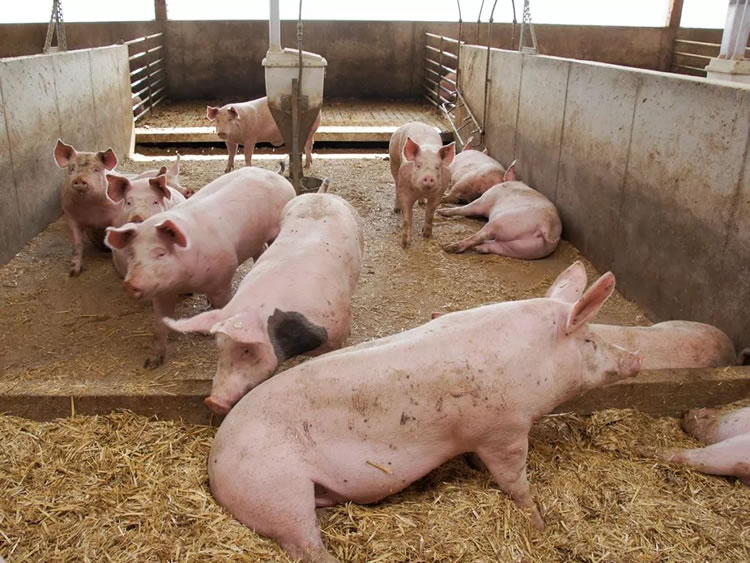The agricultural sector in Kenya is ever evolving and offering new opportunities for small-scale farmers. Pig farming continues to gain popularity due to the increasing demand for pork in the country. The annual consumption is over 300,000 metric tonnes, owing to a growing population, urbanization and changing dietary preferences. If managed properly, pig farming can be a profitable business venture. This article provides a comprehensive exploration into effective strategies and best practices to implement in order to thrive and ensure profitability in pig farming.
Strategies for efficient pig farming
Hygiene and housing
It is important that the environment be clean, well ventilated and spacious in order to avoid stress on the pigs as well as diseases. This also ensures that your pigs are comfortable while also preventing them from stomping over each other during feeding time or at night when sleeping. The building should be cleaned properly at least twice daily so that they are not sitting on their droppings for too long running the risk of infectious diseases.
Efficient Breeding
This can be accomplished by opting for high-quality breeding stock to enhance productivity. Ensuring that you source your piglets from reputable breeders as well as selecting boars and sows with desirable traits like disease resistance, good maternal skills and rapid growth rates guarantee a significant impact on productivity and profitability.
Feeding and Nutrition
For optimal growth, it is important that your pigs enjoy a balanced diet. Supplementing the animal feeds with local ingredients like soy beans, maize, sorghum will aid in providing your pigs with a well-rounded diet while simultaneously minimizing the costs and ensuring good quality nutrition. Feeds account for up to 70% of the production cost therefore minimizing this by employing the above mentioned ingredients will help you save some money.
Record Keeping and Monitoring
Keeping detailed records of breeding, feeding, vaccinations, sale and health progress of your pigs makes it a lot easier to manage your pig farm properly. This also allows for identification of challenges arising and gives you a chance to overcome them. It also aids in informed decision-making improving efficiency and productivity.
Training and continuous learning
Staying updated with the latest farming techniques and ever evolving industry trends through working with extension officers, workshops and seminars ensures better farm management. This also helps you to stay informed about seasonal and weather conditions that may affect your pig farming and how to be properly equipped and best prepared to handle each and every situation.
Disease Management
Pigs often fall prey to deadly diseases like African Swine Flu (ASF) and Porcine parvovirus (PPV). ASF can be mitigated by rearing your pigs in confinement, on paved floors. An Infestation of the pig tapeworm not only affects the pigs but is also hazardous to public health. In its immature stages, it can get into the muscles of the pigs and if humans consume the affected pork and it is under cooked, the worm can find it’s way to the spinal cord or brain causing neurocysticeroris. This will lead to psychiatric disturbances, difficulty with balance, headaches and finally death. Vigilant disease prevention measures including stringent hygiene protocols, quarantine practices and regular vaccinations are pivotal in preventing substantial losses caused by outbreaks.

Selling your pigs at the right time and the right weight will significantly impact profitability. It is important to minimize costs without compromising on the quality and this can be accomplished by prudent allocation, efficient feed management, breeding pigs for resale as pregnant sows in areas where there is high demand therefore offering an additional revenue stream. It is also advisable to ensure market readiness by establishing market connections through collaborating with wholesalers, retailers, marketers, and butcheries and even slaughter house owners to have a market for your pork products.
Potential Earnings and Considerations
An efficiently managed pig can yield between six to eight piglets twice a year, providing an income of approximately KES 42,000 to KES 48,000 per year per pig. The sale of mature pigs, dependent on weight and market price, can generate substantial income, reaching KES 40,000 per pig.
Consider an initial investment in two pregnant pigs. Slaughtering the first bred 20 swines weighing around 60kg to 70kg after seven months can yield a profit of about KES 200,000. In areas with low pig farming activity, breeding and selling pregnant sows could generate around KES 365,000 within 7 to 8 months.
It’s essential to recognize that profitability depends on various factors such as feeding costs, veterinary services, and operational expenses. A well-structured business model and adherence to efficient farming practices are key to ensuring profitability in pig farming.

Leave a Reply